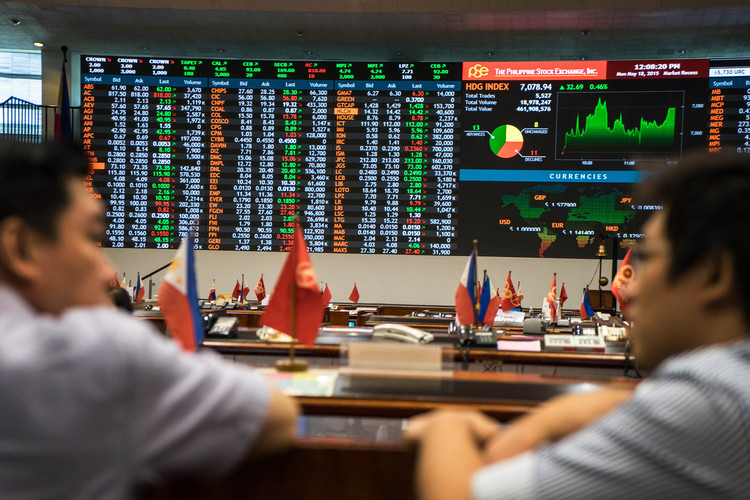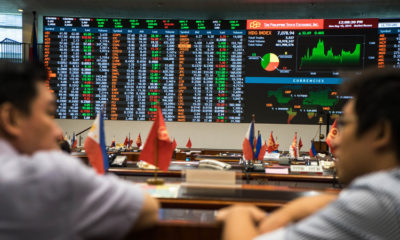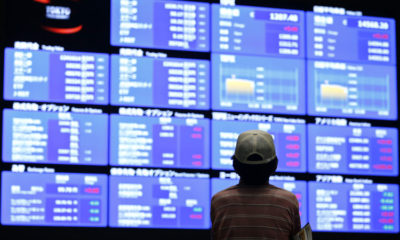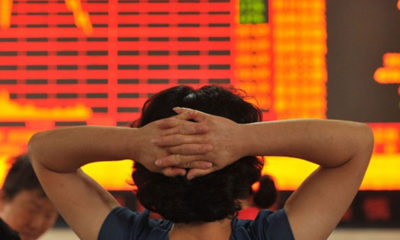Recessionary concerns continue to hold back the buy-the-dippers in Asia today, with Asian stock markets completely ignoring the strong rally by US index futures this morning. It is always worth taking Monday morning price action with a grain of salt and regional markets are probably placing more emphasis on a flat close by Wall Street, especially given another day of intra-session histrionics which saw the 3.0% swings intraday.
Reaction to the Labour win in the weekend federal election in Australia has been muted. The new Prime Minister has already stated the obvious that the Australia/China relationship will remain challenging. Labour’s win had been expected and to a certain extent priced in anyway, the only variable is that after the 3 million postal votes have been counted, will Labour have an outright majority, or be forced into a coalition agreement with the independents, the big winners this weekend, or the greens. The Australian Dollar is higher this morning, but that is a US Dollar story, while stocks are unchanged.
China sparked a local equity rally on Friday after the 5-year loan prime rate was cut by 0.25%. That is supportive of the mortgage market and was a boon to an under-pressure housing sector. Unfortunately, some of that work was undone this morning when the PBOC set a surprisingly strong CNY fix. USD/CNY was fixed at 6.6756 versus market expectations at 6.6934. A stronger Yuan is weighing on Mainland equities today but has been supportive of Asian currencies generally. China continues to try and support growth by targeted stimulus while keeping the purse strings tight and attempting to deleverage swaths of the economy. Simultaneously, its maintenance of the covid zero policy has resulted in sweeping lockdowns across the country, including Shanghai and Beijing, increasing global supply chain disruption, and also torpedoing domestic economic activity. Little wonder that Chinese equities continue to play the cautious side, and so is the rest of Asia.
The economic calendar is light in Asia today. Most interesting will be Singapore Inflation this afternoon, and I can confirm, having been there last week, that the Red Dot is more expensive than ever. Inflation YoY in April is expected at 5.50%. A higher print than that will increase the chances of an unscheduled tightening by the MAS, supportive of the Singapore Dollar, but likely to be a negative for local equities.
Germany releases its IFO Business Climate for May this afternoon, expected to remain steady at 91.40 as the Ukraine conflict continues to crush confidence. More important is likely to be the May Services and Manufacturing PMIs from Germany, France, and the Eurozone tomorrow. For obvious reasons, there is plenty of downside risk in that data. The Euro has staged a semi-decent recovery over the last week, although I put that down to weaker US yields and rising hard-landing fears in the US, than Europe turning a corner. Ukraine-related risks only have upside for Europe and weak PMI data tomorrow should confirm the Euro recovery as a bear market rally.
The US releases Durable Goods, expected to be steady at 0.50% on Wednesday. Second estimate Q1 GDP on Thursday, and on Friday, Personal Income and Expenditure and the PCE index for April. The data should show the US is maintaining growth and that inflationary pressures are slowing, but not falling. To a certain extent, that is old news now, but I believe the real story will be in the US and the rest of the world, that inflation may be slowing, but it isn’t falling, and could just trade sideways at high levels for the rest of the year. Don’t put that stagflation definition back in the desk draw just yet. And I’ll say it again, stagflation does not provide fertile conditions for a stock market rally, so no, I don’t think the “worst is over.” The intraday tail-chasing histrionics of stock markets across the globe suggests they don’t either.
The Asia-Pacific has a frisky week ahead on the central bank front though. Both the Bank of Korea and Bank Indonesia, as well as my own national embarrassment, the Reserve Bank of New Zealand, all have policy decisions. The Bank of Korea should hike by another 0.25% this week, maintaining a steady course of rate hikes for the months ahead with inflation modest by Western standards. Bank Indonesia may also be tempted to follow the Philippines’ lead from last week and hike another 0.25%. However, BI has been a reluctant hiker and may wish to see if the palm oil export ban has eased food inflation. It could pause this month as it is still very much in a supporting the recovery mode.
The Reserve Bank of New Zealand is in a world of pain of its own making. Tomorrow’s Retail Sales have upside risks despite the soaring cost of living and will add to the pressure on RBNZ to get more aggressive in reeling in inflation. Anything less than 0.50% on Wednesday with guidance suggesting more 0.50% hikes ahead will see the New Zealand Dollar punished. Having continued maintaining zero per cent interest rates, and unforgivably, maintained QE, even as the economy surged spectacularly, the RBNZ is now in a monetary box canyon. Pain will be necessary to put inflation back in the box in New Zealand and it, and Sri Lanka, are at the top of the list for a hard landing this year.
In China, Shanghai restrictions are continuing to ease, although mass testing was ordered for one district today. Unfortunately, while China must get lucky 100% of the time, the virus only has to get lucky once. The inescapable fact other covid zero countries discovered. Thus, there is still a huge risk of Shanghai restrictions coming back. Beijing is taking a different approach to Shanghai but is in its own virus quagmire as well. That should hold back the optimism in Chinese equities and will be a drag on oil prices as well. Friday’s China Industrial Profits YTD in April data will retreat from March’s 8.50% surprise. Depending on who you talk to, it could be +2.0% to -5.50%, Either way, it has downside risks. With China tinkering with stimulus, deleveraging, and maintaining covid zero, don’t go bottom fishing just yet.
Asian equity markets are mixed
Asian equity markets are having a mixed session, mostly trading from the weaker side after a volatile session on Friday saw the gnomes of Wall Street finish the day almost unchanged, after unwinding some ugly intra-day losses. The S&P 500 finished 0.01% lower, the Nasdaq lost 0.30%, and the Dow Jones rose just 0.03%.
For some reason, US index futures are rallying impressively today, perhaps in a delayed reaction to the easing of long-dated yields on Friday, or just in another act of mindless following the leader we saw throughout last week. S&P 500 futures have rallied by 0.85%, Nasdaq futures have jumped by 1.05%, and Dow futures have climbed by 0.55%.
Asia, however, isn’t taking the bait, with most regional markets trading on the soft side after Beijing tightened virus restrictions in parts of the city, and Shanghai’s Jingan district closed shops and told residents to stay at home. Japan’s Nikkei 225, ever a slave to movements in the Nasdaq has posted a reluctant 0.63% gain today, but South Korea’s Kospi is unchanged, while Taipei has risen by 0.38%, with Bangkok climbing by 0.40%.
Otherwise, it is a sea of red. Mainland China’s Shanghai Compositae has fallen by 0.50%, with the CSI 300 slumping by 1.05%. Hong Kong’s Hang Seng has tumbled 1.90% lower, with Singapore down 0.50%, Kuala Lumpur is unchanged, Jakarta lower by 0.60%, and Manila down 0.40%. Australian markets have quickly unwound the post-election bounce this morning as well, the All Ordinaries now unchanged, while the ASX 200 has dipped into the red, edging 0.10% lower.
With no positive developments around the Ukraine situation over the weekend, and everyone important probably lowering their carbon footprint in Davos anyway, Asia’s negative price action should see European markets start the day weaker. A soft German IFO survey may darken the mood. US markets remain a complete turkey shoot of mind-bending sentiment intraday sentiment swings.
US Dollar eases in Asia after firm CNY fixing
The US Dollar posted modest gains on Friday, despite weaker US bond yields, ad traders reduced US Dollar shorts into the weekend. The dollar index rose 0.15% to 103.05. A firm CNY fixing by the PBOC seems to have been the catalyst for more US Dollar weakening today, along with a slow newsreel over the weekend. That has allowed risk sentiment to reassert itself modestly, pushing the dollar index 0.33% lower to 102.69 today. It seems US recession fears are weighing on sentiment ever more heavily for now, and the technical picture suggests the US Dollar correction has more to go. A close below support at 102.50 could see the dollar index test 101.00 before the reality of a hawkish Fed reasserts itself.
EUR/USD has risen by 0.35% to 1.0590 today, continuing its recovery from its 1.0350 lows last week. A test of 1.0650 and possibly even the 1.0800 37-year breakout line remain possible, but this is a weak US Dollar story and I believe that any rally above 1.0700 will be hard to sustain in the medium-term. In a similar vein, GBP/USD has traced out a low at 1.2155 last week and has risen 0.40% to 1.2545 in Asia. A test of 1.2650 is possible this week but like Europe, the United Kingdom’s structural headwinds leave the longer-term picture still bearish.
The fall in US long-dated yields on Friday has pushed USD/JPY down to 127.35 this morning. Given the weight of long USD/JPY positioning, failure of support at 127.00 could trigger a capitulation trade potentially targeting the 125.00 support area. At those levels though, given the trajectory of US and Japan interest rates, being short becomes a dangerous game.
AUD/USD and NZD/USD have resumed their recoveries after a quiet weekend news-wise green-lighted the sentimentalists to resume buying. AUD/USD has risen 0.60% to 0.7090, and NZD/USD has risen 0.70% to 0.6455. Any rally above 0.7200 or 0.6500 will be challenging though as both currencies remain at the mercy of sudden negative swings in investor sentiment, especially from China. An RBNZ rate hike on Wednesday should allow the NZD to outperform AUD in the earlier part of the week. Beware a dovishly hawkish RBNZ statement on Wednesday though.
The PBOC has helped the recovery in risk sentiment rally by Asian currencies along today, setting the CNY at a much stronger than expected 6.6756. Most of USD/Asia is lower by around 0.25% today, although USD/MYR and USD/IDR are unchanged. It seems that USD/CNY above 6.8000 is a bridge too far now for the PBOC. But overall, they are probably more concerned about how fast it moved there, and not the overall direction of travel. In the short term, the PBOC’s actions will be supportive of Asian currencies in general. USD/INR and USD/KRW have put in decent tops at 77.80 and 1290.00 respectively. If US yields resume their move higher, I expect Asian currency weakness to reassert itself, although with regional central banks starting to hike now, we should see a slow grind, and not an abrupt sell-off.
A quiet day for oil markets
Oil prices edged higher on Friday in New York, as the persistent squeeze in refined petroleum products in the US, and ever-present Ukraine/Russia risk underpinned prices, with China slowdown and US recession noise limiting gains. Mind you, in one article I read this morning, China’s recovery hopes were supporting oil while China’s slowdown hopes were capping gains. I guess it’s not just equity markets that are very confused right now. I do note, though, that the Brent crude premium over WTI reasserted itself into the end of the week, so perhaps the worst of the US diesel and gasoline squeeze is passed for now.
Brent crude rose by 1.10% to $112.55 on Friday, gaining another 0.70% to $113.30 a barrel in Asian trading. WTI rose 0.40% to $110.55 on Friday, gaining another 0.35% to $110.90 a barrel today. The price action is consistent with a market that is not strongly leaning one way or another at the moment.
Brent crude has resistance at $116.00 and support at $111.50 a barrel. WTI has resistance at $113.00 and $116.00 a barrel, with support at $108.00. Overall, I am expecting Brent crude to bounce around in a $111.00 to$117.00 range this week.
Gold rises on weaker US Dollar
Gold prices rose on Friday, climbing just 0.24% to $1844.00 an ounce. In Asia, they have gained 0.42% to $1854.00 an ounce. Although gold’s rally has been impressive over the past week, it has yet to be proven that it is not just the result of a weaker US Dollar. The true test of its resolve will be its ability to maintain gains when the US Dollar starts rising again.
Nevertheless, the technical picture is swinging back to a further test of the upside with resistance at $1860.00 and then $1885.00 an ounce, its 100-day moving average. Support is at $1845.00 and $1840.00, followed by $1832.00 an ounce.















